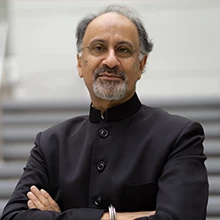
The idea travels under different names—“burden sharing,” “intercreditor equity,” “fundamental fairness,” and “comparability of treatment.” But the underlying proposition is the same. All creditors, of whatever stripe, caught up in a distressed sovereign-debt situation share one thing in common: Whatever is disproportionately good for any one creditor or group of creditors will probably be disproportionately bad for all the others.
When a government stumbles into a situation of debt distress, its repayment capacity, by definition, will be insufficient to allow it to service all of its obligations on their original terms. Then there are only two options: extract a comparable amount of the needed debt relief from all similarly situated creditors or seek a disproportionate amount of debt relief from some creditors while allowing others to get away with providing little or no debt relief.
No lender will lightly accept someone else getting preferential terms. The result is a modern-day Alphonse and Gaston routine: nobody wants to be the first to provide debt relief. That thrusts debt-distressed governments into an indefinite purgatory, with predictably catastrophic outcomes for their most vulnerable citizens. Debt distress is becoming increasingly common in developing countries today, especially in the poorest countries. Over the past three years alone, 18 sovereign defaults have occurred in 10 developing countries, surpassing the total of the previous two decades. It’s in nobody’s interest to continue the stalemate that prevails among creditors.
Over the last four decades, policymakers have tried three broad approaches to ensuring respect for the principle of comparable treatment of creditors in a sovereign debt workout. The first seeks comparable treatment through provisions in the underlying financing contracts. Collective-action clauses are the most visible example of this technique. They effectively force potentially maverick creditors into accepting a settlement approved by a supermajority of their colleagues, thus replicating a fundamental feature of most municipal bankruptcy codes — supermajority creditor control.
The second has the virtue of bluntness—but little else. Each creditor group simply refuses to proceed with a settlement of its claims against the sovereign borrower until it is satisfied that each of the other creditor groups is providing comparable relief. This appears to be the technique being followed in debt restructurings being pursued under the G20’s Common Framework. None of the three principal groups of external creditors—commercial lenders, Paris Club bilateral creditors, and non-Paris Club bilateral creditors like China and India—wishes to proceed with its own settlement until it knows the terms that the debtor has agreed with the other groups. This has been one of the main reasons why the Common Framework has been unable to deliver timely and efficient debt relief. It is a problem aggravated by a failure to agree on a formula for assessing the “comparability” of different debt restructuring models.
Perhaps in response to the inability of the Common Framework to deliver timely sovereign-debt restructurings, there has been a renewed interest in pursuing the third approach — legislation. Bills have been introduced into the New York State Assembly that seek to alter the regime for the restructuring of sovereign-debt obligations governed by New York law.
One of those proposals, Section 230 of the Sovereign Debt Stability Act, may hold some promise. It would enforce the principle of comparable treatment by capping the maximum allowable judicial recovery at the same level as that agreed by the country’s official bilateral lenders in a debt restructuring undertaken under an international initiative like the Highly Indebted Poor Country (HIPC) Initiative or the Common Framework. This proposal is similar to legislation enacted in 2010 by the UK Parliament that capped judicial recoveries on public debt instruments issued by HIPC countries at the level agreed by the official bilateral creditors in connection with the HIPC Initiative.
This approach has the considerable merit of being easily understood by politicians and the public. If a country like the United States or Great Britain has determined to write down or defer the claims of its taxpayers against a foreign sovereign, what sense does it make to allow a private sector creditor to use the judicial machinery of that country to extract a financial recovery greater than what the taxpayers will receive?
As we have argued before, however, such legislation should be drawn narrowly. The proposed New York legislation isn’t exactly surgical in its scope. Unlike its 2010 UK precedent (which applied only to the 39 low-income countries covered by the HIPC Initiative), Section 230 could sweep in middle-income countries not eligible for treatment under the Common Framework. It is also light on detail: it requires the litigant’s claim to comport with “burden-sharing standards” but does not specify what this will mean in practice. It does not strike us as sensible to leave that task, without guidance, in the discretion of a New York judge.
We believe these flaws may yet be salvaged. There is significant value in limiting how much a creditor can collect in a legal proceeding against a low-income country participating in a consensual debt-workout process. The goal of the law should be to link the maximum permissible amount to the amounts recovered by other creditors under the Common Framework. These limitations should be applied once creditors have established a formula for equal burden-sharing, and once debt relief has been agreed to by a supermajority of creditors. We believe that Section 230 of the Sovereign Debt Stability Act can be usefully tweaked to incorporate these limitations.



Join the Conversation